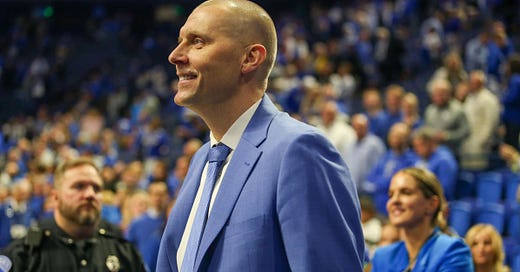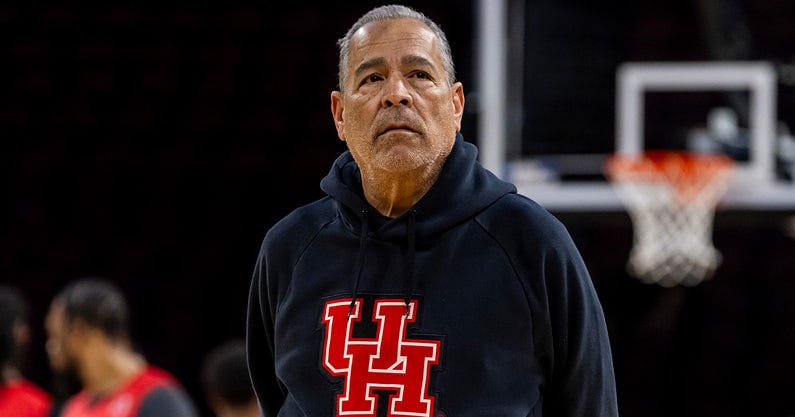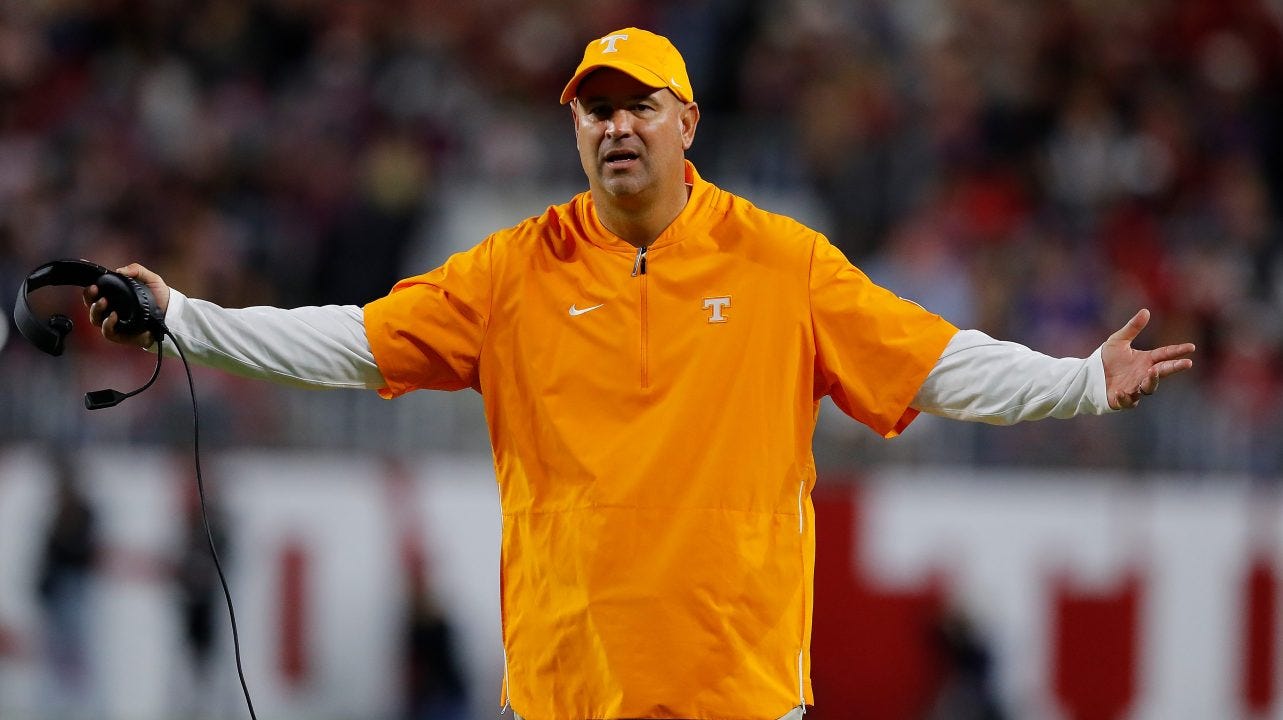Kentucky's Massive NIL Budget, Previewing the House Settlement Impact, MBB Head Coaching Changes & More | Newsletter #315
Welcome to the NIL Newsletter by Optimum Sports Consulting - providing valuable, actionable NIL resources for athletes, administrators, agencies and other sport professionals.
Keep up to date on all of our newsletters and content by checking out past Optimum Sports Consulting Newsletters and following us on Twitter!
This Monday Newsletter includes:
1. Kentucky’s New NIL Budget for 2025-26
2. Kelvin Sampson on House Settlement’s Impact
3. What’s coming up in the world of NIL
4. Legal Updates: Oregon Bill & Jeremy Pruitt Lawsuit
5. News/tips for administrators, student athletes, and agencies
Major News
Kentucky Reportedly Has a Massive NIL Budget for 2025-26
“The Wildcats could be working with $8-10 million,” On3’s Nakos reports.
After a rollercoaster 2024–25 campaign, all eyes are on Kentucky men’s basketball as it transitions into a robust new era of NIL and direct-pay possibilities. According to On3’s Pete Nakos, the Wildcats are positioned to pool roughly $8–$10 million in NIL funds alone, separate from their eventual House v. NCAA revenue-sharing budget. For perspective, that figure dwarfs what many mid-tier programs can muster and could rank among the highest in the SEC or nationally for a basketball-first approach.
This matters because Kentucky’s ability to offer strong NIL compensation is likely to draw top-tier high school recruits and in-demand transfers. Though the House settlement imposes a $20.5M annual cap for direct payments starting in 2025–26, “booster-funded” NIL deals can serve as a complement to official revenue sharing.
Rival programs who planned on offering $2M–$4M for men’s basketball might find it hard to match Kentucky’s combined resources, given the “all-in” approach from local businesses and wealthy alums.
The large budget stands out: The NCAA’s upcoming Deloitte-led enforcement will scrutinize any perceived “pay-for-play.” However, if carefully structured with “fair-market value” justifications (i.e., social media engagement, brand activation duties), Kentucky’s deals should remain legitimate.
A robust compliance office will be crucial: Overstepping or conflating direct NIL pay with old-school impermissible inducements could spur investigations and future eligibility headaches.
CLICK HERE to learn more.
Kelvin Sampson Previews House Settlement’s Impact
“The game will tell us what we’re going to do,” Sampson says.
Fresh off another deep postseason run, Houston head coach Kelvin Sampson offered blunt remarks on how the House v. NCAA settlement, expected to finalize soon, will reshape rosters. Under the settlement, schools can annually distribute up to $20.5 million to athletes in 2025–26, increasing by 4% each year. Sampson stressed that coaches will have to navigate higher-level decisions on resource allocation: more emphasis on ADs, presidents, and CFOs deciding whether football or basketball gets the biggest slice.
Schools that historically overshadowed basketball (think SEC football powers) may allocate 80%–85% of their revenue cap to football, leaving their hoops budgets at a fraction of their total allowance. That might inadvertently boost programs like Houston, which place a premium on basketball, or schools in the Big East that don’t sponsor FBS football.
Sampson’s Cougars have emerged as a perennial contender by retaining continuity rather than cycling through big-money transfers, but the advent of direct-pay may make it trickier to hold onto players if other programs wave larger checks.
Sampson hinted that “the game will tell us what we’re going to do,” meaning the competitive landscape and media valuations can force universities’ hands. If a massive new media deal emerges, a school might up its distribution to hoops to remain relevant on the national stage.
Athletic departments must refine or build out their compliance units, potentially creating new “roster valuation” positions or general manager roles. Real-time oversight of pay distributions ensures universities aren’t inadvertently violating the House settlement’s “fair-market value” thresholds.
CLICK HERE to learn more.
Other Notable Stories to Follow
Veteran broadcaster Jim Nantz, now a Houston superfan in retirement, hailed the Cougars’ roster continuity in an era of transfers and “quick deals.” - LINK
CSU picks ex-Northern Iowa guard Ali Farokhmanesh as next MBB Coach, hoping to keep momentum in an NIL-driven sport. - LINK
The Tennessee Volunteers recognized head coach Rick Barnes as the NCAA’s winningest active coach, underscoring an approach blending tradition with modern, NIL-savvy. - LINK
In a growing trend, NBA or top-tier DI assistants, such as former Alabama AC Ryan Pannone and now current Arkansas State HC are accepting mid-major head coaching opportunities, citing NIL as part of the recruiting calculus. - LINK
What’s Coming Up Next For NIL
April 6, 2025 | NCAA WBB Championship Game in Tampa, FL
April 7, 2025 | NCAA MBB Championship Game in San Antonio, TX
April 7, 2025 | House Settlement Fairness Hearing
June 15, 2025 | House Settlement Opt-In Date
July 1, 2025 | Schools May Begin Direct NIL Payments Under Settlement (Revenue-Sharing Year 1)
Legal Updates
Jeremy Pruitt’s $100 Million Lawsuit
NCAA tries to bat down ex-Vols coach’s claims.
Fired by Tennessee for cause, Pruitt now alleges the NCAA singled him out for rules violations while ignoring the broader system. Legal experts say Pruitt faces steep odds—courts generally let private membership groups like the NCAA self-govern. Plus, the pay issues he complains about might’ve been disallowed under old NCAA rules, not new ones allowing direct pay to athletes.
Attorneys for coaches or schools challenging the NCAA must remember that Tarkanian (1988) firmly establishes the NCAA as a non-state actor. Constitutional due process arguments don’t apply. Meanwhile, antitrust angles may not help Pruitt: the association can still discipline for prior rules, even if new NIL reforms now exist.
CLICK HERE to learn more.
PICTURE
Oregon Bill Could Undercut NCAA’s NIL Limits
Pending legislation would allow schools to pay athletes beyond the House settlement’s $20.5M cap. Critics warn it could spark a patchwork approach to enforcement—once again pitting states with more lenient laws against those sticking to “fair-market value” constraints.
One thing to consider is that if a state law openly contradicts the House “cap,” the NCAA and Deloitte (the new enforcement arm) may face serious hurdles. Institutions in states like Oregon could test how binding the settlement’s “fair-market” approach is, resulting in potential legal showdowns reminiscent of the pre-2021 era when states introduced disparate NIL laws.
CLICK HERE to learn more.
Optimum Sports Consulting is here to help.
For athletes looking for NIL insight and advisement, administrators and collectives looking for resources and facilitating a best-in-class process, or agents looking to navigate the changing landscape, we’re here to help!
Message us now for a free consultation.
FOR ATHLETES
Notes for the Week
Big East ‘Roster Investment’: reports show many Big East teams funneling $5-8M in direct pay next year, outbidding mid-majors for top talent. - LINK
Tip of the Week:
If you’re in a league or program with a robust direct-pay plan, weigh your marketing and brand potential—but watch the compliance rules. Exceeding certain amounts might trigger “fair-market” audits.
FOR ADMINS
Notes for the Week
Gov. Jared Polis signs NIL Bill in Colorado, allowing public universities to pay athletes directly using revenue from tickets and merchandise. However, the lack of public record access raises transparency concerns. - LINK
SoCon Commissioner Michael Cross acknowledges some schools will opt in soon, while others might wait a year. Keeping budgets honest and avoiding chaotic overspending will be crucial.- LINK
Tip of the Week:
Host open forums with campus leaders—especially legal counsel—to address new pay-for-play complexities. Clear guidelines can mitigate confusion and tampering allegations.
FOR AGENCIES
Notes for the Week
A House panel advanced a measure that would restrict agent fees for name, image, and likeness representation to 5%. It would also allow coaches more input on athlete compensation and require educational sessions. If passed, agencies must structure deals carefully or risk compliance snags. - LINK
Tip of the Week:
Explore “creative partial deals,” splitting direct-pay from marketing endorsements. This helps align athlete pay with House rules while maintaining a robust, brand-friendly arrangement.
Thanks for Reading!
Keep up to date on all of our newsletters and content by checking out past Optimum Sports Consulting Newsletters and following us on Twitter!








